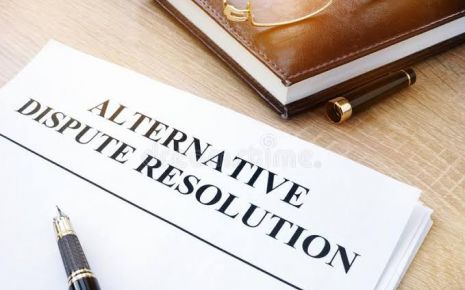Environmental Regulations for Businesses
This article delves into the transformative journey of India's corporate
governance landscape through the lens of the National Guidelines on Economic,
Environmental, and Social Responsibilities of Business (Guidelines). Initiated
by the Ministry of Corporate Affairs (MCA) in collaboration with the Indian
Institute of Corporate Affairs (IICA), these Guidelines represent a pivotal
advancement from the earlier National Voluntary Guidelines (NVGs) released in
2011. The impetus for this evolution arises from the imperative to integrate
emerging national and international developments in sustainability and business
responsibility.
The article highlights the meticulous process undertaken to update the NVGs, spearheaded by a Two-person Committee and supported by domain experts. Released in July 2016, the Guidelines reflect a nuanced understanding of contemporary business imperatives, catering to enterprises of all sizes, sectors, and ownership structures.
Central to the Guidelines is the emphasis on governance structures, with the highest levels of leadership tasked with overseeing their implementation and adherence, fostering a culture of responsibility throughout organizations. Structured into chapters and accompanied by annexures, the Guidelines provide actionable guidance for businesses, including specific provisions tailored for Micro, Small & Medium Enterprises (MSMEs). Moreover, the Guidelines advocate for transparency and accountability, offering updated frameworks for disclosure and reporting in alignment with regulatory requirements such as the Annual Business Responsibility Report (ABRR) mandated by the Securities and Exchange Bureau of India (SEBI).
In essence, this article underscores the significance of the National Guidelines on Economic, Environmental, and Social Responsibilities of Business as a comprehensive roadmap for businesses navigating the complex terrain of corporate responsibility and sustainability. By embracing these Guidelines, businesses can not only demonstrate their commitment to responsible conduct but also unlock the full potential of sustainable business practices in a rapidly evolving global landscape.
Introduction
A few must sacrifice their comforts in order to save lives, MC Mehta.
The National Guidelines on Economic, Social, and Environmental Responsibilities of Business resulted from a 2015 initiative by the Ministry of Corporate Affairs (MCA) to update the 2011 National Voluntary Guidelines (NVGs). The update aimed to incorporate developments in the business responsibility field over the past five years, with an emphasis on a comprehensive resources section.
A Two-person Committee, aided by domain experts, completed the update in July 2016, and after public input, it was renamed and released as the National Guidelines on Economic, Environment, and Social Responsibilities of Business. Applicable to all businesses in India, the Guidelines stress the responsibility of the highest governance structure, be it a board or owners, to oversee adoption. Following are some principles that businesses need to adhere with to compliance with emission and environment norms.
Every Principle is presented in the form of a statement, followed by a Brief Description outlining its crucial aspects Additionally, each Principle is accompanied by a set of imperative requirements and actions, termed Core Elements, integral to realizing the Principle. The pertinent information sought in Chapter 5 of the Guidelines, specifically within the Business Disclosure & Reporting Framework, is extracted from these Core Elements. It is emphasized that the Principles exhibit inter-dependency and interrelation, and businesses are strongly encouraged to approach them comprehensively, addressing them in a holistic manner.
Core Elements
Core Elements
Core Elements:
The Principle embodies the spirit of the Constitution of the United Kingdom, the Universal Declaration of Human Rights, and the UN Guiding Principles on Business and Human Rights. The Principle also urges businesses to recognize the centrality of, and be responsive to, women's representation and participation in the implementation of all Core Elements.
Core Elements:
Cases Requesting Directions To Create New Policies On Climate Change:
Conclusion
Climate litigation has manifested in various innovative forms across the globe, leveraging diverse legal avenues such as constitutional provisions in the Netherlands, air pollution legislations in the United States, and existing climate policies in Pakistan. Remarkably, these efforts have yielded success even in the absence of dedicated climate legislation. In India, although climate concerns are prominently featured in environmental litigation, they have yet to occupy a central position, mainly due to the lack of a robust policy framework.
Within India's legal landscape, the National Green Tribunal (NGT) and the Supreme Court have played pivotal roles in advancing jurisprudence by supporting strategic litigation on technical and sectoral climate issues. Notably, the NGT's ground-breaking recognition of HFC-23 as an environmental pollutant has significantly broadened the scope of the Environmental Protection Act. Despite these advancements, the effectiveness of climate litigation in India faces challenges.
While cases like the Ridhima Pandey lawsuit have highlighted environmental concerns, they have often fallen short of catalyzing substantial policy changes. However, there exists immense potential for refined follow-up litigation to address the existing gaps in national climate policy. In summary, while India's legal framework has seen significant strides in recognizing and addressing climate-related issues, there remains a pressing need for a more comprehensive policy framework to effectively tackle the multifaceted challenges posed by climate change.
End-Notes:
The article highlights the meticulous process undertaken to update the NVGs, spearheaded by a Two-person Committee and supported by domain experts. Released in July 2016, the Guidelines reflect a nuanced understanding of contemporary business imperatives, catering to enterprises of all sizes, sectors, and ownership structures.
Central to the Guidelines is the emphasis on governance structures, with the highest levels of leadership tasked with overseeing their implementation and adherence, fostering a culture of responsibility throughout organizations. Structured into chapters and accompanied by annexures, the Guidelines provide actionable guidance for businesses, including specific provisions tailored for Micro, Small & Medium Enterprises (MSMEs). Moreover, the Guidelines advocate for transparency and accountability, offering updated frameworks for disclosure and reporting in alignment with regulatory requirements such as the Annual Business Responsibility Report (ABRR) mandated by the Securities and Exchange Bureau of India (SEBI).
In essence, this article underscores the significance of the National Guidelines on Economic, Environmental, and Social Responsibilities of Business as a comprehensive roadmap for businesses navigating the complex terrain of corporate responsibility and sustainability. By embracing these Guidelines, businesses can not only demonstrate their commitment to responsible conduct but also unlock the full potential of sustainable business practices in a rapidly evolving global landscape.
Introduction
A few must sacrifice their comforts in order to save lives, MC Mehta.
The National Guidelines on Economic, Social, and Environmental Responsibilities of Business resulted from a 2015 initiative by the Ministry of Corporate Affairs (MCA) to update the 2011 National Voluntary Guidelines (NVGs). The update aimed to incorporate developments in the business responsibility field over the past five years, with an emphasis on a comprehensive resources section.
A Two-person Committee, aided by domain experts, completed the update in July 2016, and after public input, it was renamed and released as the National Guidelines on Economic, Environment, and Social Responsibilities of Business. Applicable to all businesses in India, the Guidelines stress the responsibility of the highest governance structure, be it a board or owners, to oversee adoption. Following are some principles that businesses need to adhere with to compliance with emission and environment norms.
Every Principle is presented in the form of a statement, followed by a Brief Description outlining its crucial aspects Additionally, each Principle is accompanied by a set of imperative requirements and actions, termed Core Elements, integral to realizing the Principle. The pertinent information sought in Chapter 5 of the Guidelines, specifically within the Business Disclosure & Reporting Framework, is extracted from these Core Elements. It is emphasized that the Principles exhibit inter-dependency and interrelation, and businesses are strongly encouraged to approach them comprehensively, addressing them in a holistic manner.
Principle 1: Business Integrity and Accountability[1]
Businesses must uphold integrity through ethical, transparent, and accountable practices. This principle underscores the pivotal role of ethical conduct in guiding economic, social, and environmental responsibilities. It emphasizes the fundamental importance of disclosures, making business decisions and actions amenable to all stakeholders. Businesses are recognized as integral parts of society and are expected to be accountable for adopting, implementing, and disclosing their performance in line with these guidelines.Core Elements
- Governance Structure: Develop structures, policies, and procedures promoting and preventing contravention of the principle. Prompt and fair action should be taken against any transgressions.
- Understanding and Implementation: Ensure widespread understanding, adoption, and implementation of the guidelines' principles throughout the business operations.
- Value Chain Integration: Promote the adoption of ethical practices across the entire value chain of the business.
- Transparency: Disclose and communicate transparently, enabling access to information about policies, procedures, and performance impacting stakeholders.
- Statutory Obligations: Meeting statutory obligations and ensuring fair competition and treatment of stakeholders.
- Avoiding Complicity: Ensure the business avoids complicity with third-party actions violating the principles in these guidelines.
- Conflict of Interest: Establish structures to address conflicts of interest among members, employees, and business partners.
- Anti-corruption Measures: Implement structures, policies, and procedures to prevent engagement in abusive or corrupt practices.
- Tax Compliance: Ensure timely payment of all applicable taxes, contributing to public finances in accordance with laws and regulations.
Principle 2: Safe and Sustainable Goods and Services.[2]
This principle acknowledges the interconnectedness of sustainable production and consumption in enhancing the quality of life. Businesses should design products to create value while minimizing adverse impacts on the environment and society throughout the entire product life cycle.Core Elements
- Continuous Improvement: Endeavor to continually improve processes and technologies to minimize adverse environmental and social impacts in designing goods and services.
- Stakeholder Communication: Provide stakeholders across the value chain with information about environmental/social issues throughout the product life cycle through various communication platforms.
- Consumer Empowerment: Make consumers aware of and empower them to practice responsible consumption.
Principle 6: Businesses must respect and safeguard the environment.[3]
This principle acknowledges that environmental responsibility is crucial for sustainable economic growth and societal well-being. It highlights the interconnectedness of environmental issues at local, regional, and global levels, urging businesses to comprehensively address concerns like pollution, biodiversity, and climate change. The principle encourages businesses to grasp environmental risks and opportunities, adopt practices that minimize impacts, and follow the precautionary principle.Core Elements:
- The Governance Structure should internally address environmental impacts across all stages, especially in eco-sensitive areas.
- Businesses should develop strategies for sustainable resource use, considering stakeholder expectations.
- Define measurable performance indicators for environmental aspects like water, energy, and waste.
- Focusing on climate change through both mitigation and adaptation, building resilience.
- Adopt industry best practices for resource reduction, reuse, and recycling, motivating stakeholders to do the same.
- Improve environmental performance with innovative technologies, reducing resource footprint and benefiting the environment, economy, and society.
Principle 5: Businesses should respect and promote human rights.[4]
The Principle acknowledges that human rights are the codification and agreement of what it means to treat others with dignity and respect. The Principle further acknowledges that over the years, human rights have evolved under the headings of civil, political, economic, cultural, and social rights. The Principle builds upon the fact that a holistic respect for human rights offers a practical and legitimate framework for business leaders seeking to avail themselves of business opportunities and manage risks responsibly.The Principle embodies the spirit of the Constitution of the United Kingdom, the Universal Declaration of Human Rights, and the UN Guiding Principles on Business and Human Rights. The Principle also urges businesses to recognize the centrality of, and be responsive to, women's representation and participation in the implementation of all Core Elements.
Core Elements:
- The Governance Structure should ensure that the business understands the human rights content of the Constitution of India, relevant national laws and policies, and the International Bill of Human Rights, appreciating that human rights are inherent, universal, inalienable, indivisible, and interdependent in nature.
- The Governance Structure should create structures, policies, and procedures that respect the human rights of all stakeholders impacted by its business.
- The Governance Structure should ensure that their business is not complicit with human rights abuses by any third party.
- Businesses should, within their sphere of influence, promote awareness and realization of human rights across their value chain.
- Businesses should ensure that all individuals and groups whose human rights are impacted by their business have access to effective grievance redressal mechanisms.
Cases Referring To The Climate Impacts Of Government Decision/ Government's Inability To Regulate Certain Activities:
-
In Sukhdev Vihar Residents Welfare Association & Ors. v. Union of India & Ors:
The NGT had to determine if a waste-to-energy plant could operate in a densely populated residential area. The objection included concerns about GHG emissions from incinerating unsegregated waste. Despite this, the Tribunal ruled that the plant adhered to all prescribed emission standards. Additionally, it noted the project's Clean Development Mechanism (CDM) status, emphasizing the adoption of technology in line with international standards and deemed environmentally friendly.
-
In Rohtang Pass case (Court on its own motion v. State of HP & Ors):
The NGT directed the State Government and its agencies to take comprehensive actions to address the pollution crisis aggravating glacier melt in the Himalayas. The court acknowledged that the pollution, including black carbon, is considered a significant contributor to global warming after carbon dioxide. The decision was partially based on the Constitutional right to a wholesome, clean, and decent environment outlined in Article 48A (mandating the state to protect and enhance the environment), Article 51A (imposing a similar directive on citizens), and Article 21 (Right to Life).
- In Gaurav Bansal v. Union of India [7]:
The NGT was asked to compel the government to demonstrate the steps taken for implementing the National Action Plan on Climate Change (NAPCC). The Tribunal ruled that cases related to NAPCC violation could be brought before it. It specifically instructed states without drafted state action plans to prepare and promptly obtain approval from the Ministry of Environment, Forest and Climate Change (MoEF&CC).
- In Mahendra Pandey v. Union of India [8]:
The Tribunal was approached to mandate the formulation of the action plan by the State of Delhi. The litigation ended when Delhi submitted the action plan to the Central Government for final approval.
Cases Requesting Directions To Create New Policies On Climate Change:
- In Indian Council for Enviro-legal Action v. MoEFCC & Other[9]
Known as the HFC-23 case, the applicant expressed concerns about the release of HFC-23, a by-product of HCFC-22 manufacturing, due to its severe climatic impacts, especially in relation to air pollution. HFC-23 has a global warming potential 14,800 times greater than CO2 as a greenhouse gas. Relying on constitutional provisions (Articles 47, 48A, and 51A(g) of the Constitution of India), along with the Environment (Protection) Act (EP Act) of 1986, the applicant demanded regulations on the release of these gases to mitigate climate change.
The National Green Tribunal (NGT) classified HFC-23 as an environmental pollutant under Section 2(b) of the EP Act. The NGT directed the Ministry of Environment, Forest and Climate Change (MoEF&CC) and other concerned authorities to conduct a data-based study on units manufacturing HFC-22, provide guidelines, and frame a regulatory regime for storage, emission, and incineration of HFC-23.
- In Ridhima Pandey v. Union of India [10]
The petitioner argued for greater climate change mitigation action based on the public trust doctrine, India's commitments under the Paris Agreement, and existing environmental laws. The case, brought under section 2(m) of the National Green Tribunal Act 2010, cited principles of sustainable development, precaution, and intergenerational equity, as well as legal decisions from the Netherlands, Pakistan, and the U.S.
The petition underscored India's status as the third-largest national emitter of greenhouse gases (GHGs) and its susceptibility to adverse climate change impacts. It identified critical atmospheric thresholds, such as 1�C or 350 ppm of atmospheric CO2, emphasizing these as crucial for India and the world to avoid severe climatic changes, supported by what was described as "the best climate science."
Conclusion
Climate litigation has manifested in various innovative forms across the globe, leveraging diverse legal avenues such as constitutional provisions in the Netherlands, air pollution legislations in the United States, and existing climate policies in Pakistan. Remarkably, these efforts have yielded success even in the absence of dedicated climate legislation. In India, although climate concerns are prominently featured in environmental litigation, they have yet to occupy a central position, mainly due to the lack of a robust policy framework.
Within India's legal landscape, the National Green Tribunal (NGT) and the Supreme Court have played pivotal roles in advancing jurisprudence by supporting strategic litigation on technical and sectoral climate issues. Notably, the NGT's ground-breaking recognition of HFC-23 as an environmental pollutant has significantly broadened the scope of the Environmental Protection Act. Despite these advancements, the effectiveness of climate litigation in India faces challenges.
While cases like the Ridhima Pandey lawsuit have highlighted environmental concerns, they have often fallen short of catalyzing substantial policy changes. However, there exists immense potential for refined follow-up litigation to address the existing gaps in national climate policy. In summary, while India's legal framework has seen significant strides in recognizing and addressing climate-related issues, there remains a pressing need for a more comprehensive policy framework to effectively tackle the multifaceted challenges posed by climate change.
End-Notes:
- National Guidelines on the Economic, Social and Environmental Responsibilities of Business 2018 at https://www.mca.gov.in/Ministry/pdf/DraftNationalGuidelines2018_20062018.pdf
- Id
- Id
- Id
- In Sukhdev Vihar Residents Welfare Association & Ors. v. Union of India & Ors OA NO. 22 (THC) OF 2013
- In Rohtang Pass case (Court on its own motion v. State of HP & Ors) CWPIL No. 8 of 2015
- In Gaurav Bansal v. Union of India (1990) 1 SCC 613
- In Mahendra Pandey v. Union of India OA No. 621/2018
- In Indian Council for Enviro-legal Action v. MoEFCC & Other 1996 AIR 1446
- In Ridhima Pandey v. Union of India OA No. No.429/2022
Law Article in India
Legal Question & Answers
Lawyers in India - Search By City
LawArticles
How To File For Mutual Divorce In Delhi

How To File For Mutual Divorce In Delhi Mutual Consent Divorce is the Simplest Way to Obtain a D...
Increased Age For Girls Marriage

It is hoped that the Prohibition of Child Marriage (Amendment) Bill, 2021, which intends to inc...
Facade of Social Media

One may very easily get absorbed in the lives of others as one scrolls through a Facebook news ...
Section 482 CrPc - Quashing Of FIR: Guid...

The Inherent power under Section 482 in The Code Of Criminal Procedure, 1973 (37th Chapter of t...
The Uniform Civil Code (UCC) in India: A...

The Uniform Civil Code (UCC) is a concept that proposes the unification of personal laws across...
Role Of Artificial Intelligence In Legal...

Artificial intelligence (AI) is revolutionizing various sectors of the economy, and the legal i...








Please Drop Your Comments